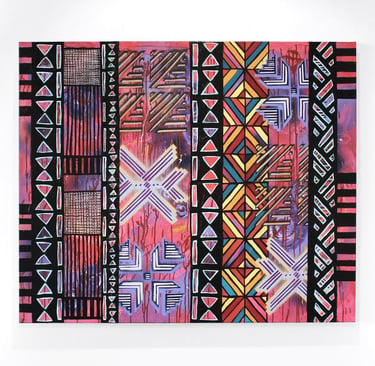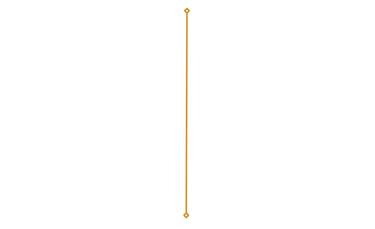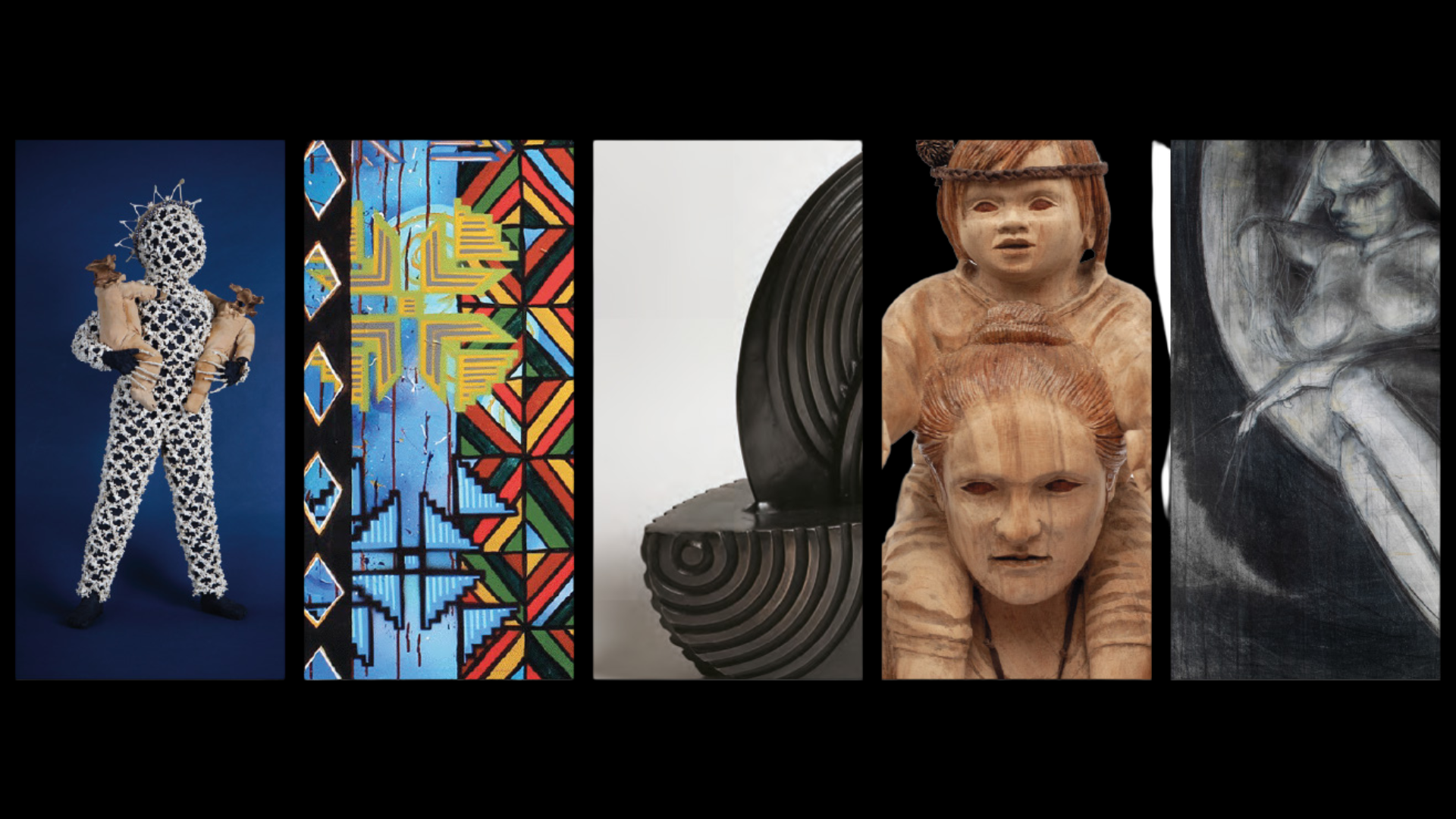
Bravery of Women
Group Exhibition
May 3rd - June 15th
Featured Work's: Linde Ivimey, Dagmar Dyck, Marté Szirmay, Wanda Gillespie, Rebekah Farr,
Opening May 3rd - 3-8pm
Show Synopsis
This exhibition celebrates the resilience, innovation, and unyielding creative spirit of five extraordinary women artists - Linde Ivimey, Dagmar Dyck, Marte Szirmay, Wanda Gillespie, and Rebekah Farr, whose practices transcend boundaries of material, tradition, and personal adversity. Working across sculpture, textile, bronze, installation and painting, their practices reveal how creativity emerges from resilience, how tradition dialogues with innovation, and how material and form itself becomes storyteller.
Dina Djezić also wrote a wonderful article about the exhibition you can check it out here.
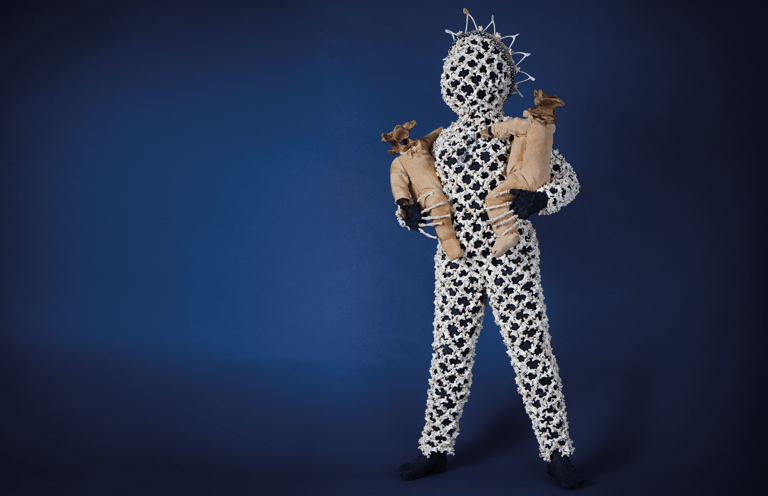

Linde Ivimey - SENSO É COLPA E VERGOGNA
Dagmar Dyck
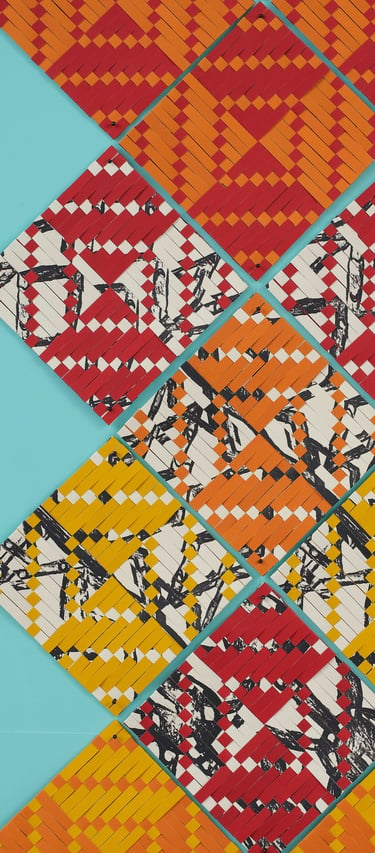

As a first-generation New Zealander of Tongan descent, Dagmar Dyck is an interdisciplinary artist, educator, and cultural advocate with a practice spanning over thirty years. Her work centres on the creative process as a method of sense-making, where material exploration becomes a pathway to cultural reclamation and renewal. Drawing deeply on Tongan koloa (treasures), particularly ngatu (tapa cloth) and fala (woven mats), she engages with ancestral knowledge systems through contemporary artistic practice.
Her latest body of work, falanoa, positions fala as both material and metaphor, “an intergenerational vessel carrying women’s voices, ancestral knowledge, and lived histories.” In her words, “Our histories are not only written in books; they are woven into our mats.” Through this process, she participates in a talanoa (dialogue) of making, one that honours the foundations of lālanga (weaving) while imagining new ways forward.
Though she does not speak fluent Tongan, she sees her creative response as a powerful act of translation: “My response to being Tongan is to galvanise traditional and ancestral knowledge into contemporary art forms.” Her work is a living archive, an evolving practice that binds past, present, and future through material, memory, and connection.

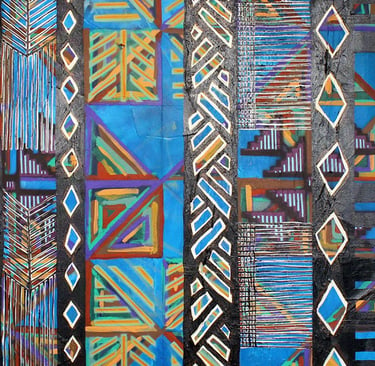

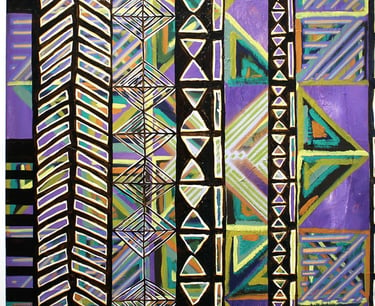
Linde Ivimey
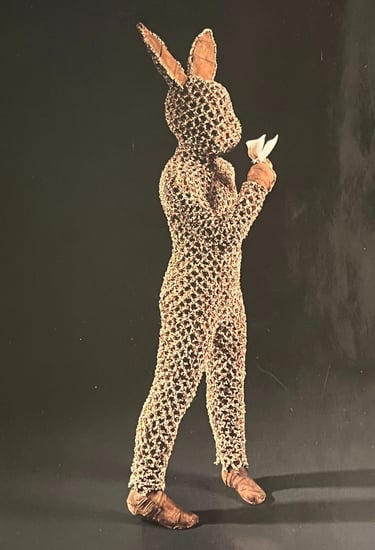

Linde Ivimey’s sculptures are corporeal psalms - stitched from bone, fabric, and salvaged fragments, they speak of survival’s sacred scars. Her figures, like SENSO É COLPA E VERGOGNA, bear their burdens with a paradoxical grace, their vertebrae and wishbones strung together as relics of both loss and resilience. Ivimey’s process is alchemical: boiling chicken bones for stock (shared with her community), dyeing textiles by hand, and welding steel into skeletal forms that hover between fragility and strength.
A decade of cancer treatments left Ivimey with 178.5 centimeters of surgical seams, a bodily map she categorizes as "B.C." and "A.D." (before cancer and after diagnosis). Yet her art transcends pain, becoming a hypnotic ritual of reinvention. "I don’t remember making half these works," she admits, "but they remember me." In her Erskineville warehouse, part studio, part sanctuary, Ivimey continues to forge a language where guilt and redemption are woven into every thread.
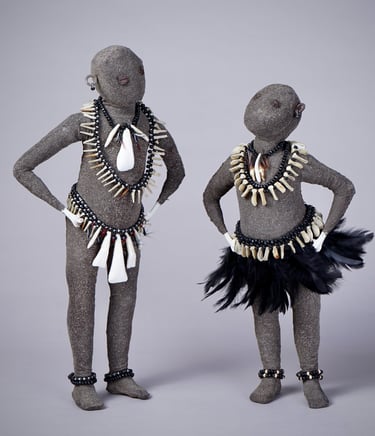

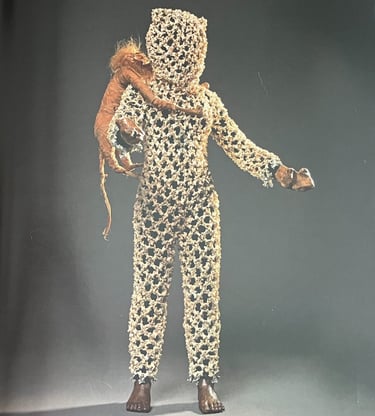

Marté Szirmay
Marte Szirmay’s EARTHLIGHT series is a celestial ode to the Sun, our silent collaborator in life’s unfolding. Her bronze sculptures, at once intimate and cosmic, serve as focusing devices for meditation, distilling the vastness of the Milky Way into forms that fit the palm. Drawing on astronomy and ancient myth, Szirmay’s work reminds us that we orbit a star whose constancy, over 4.6 billion years, made human existence possible.
A graduate of Auckland’s Elam School of Fine Arts, Szirmay has long explored materials as conduits for contemplation. Whether through the weight of bronze or the glow of polished stone, her art invites a pause - a recognition of our place in an "unfashionable" spiral arm of the galaxy. "The Sun doesn’t ask for worship," she notes, "but without its light, we’d have no shadows to measure our bravery by."
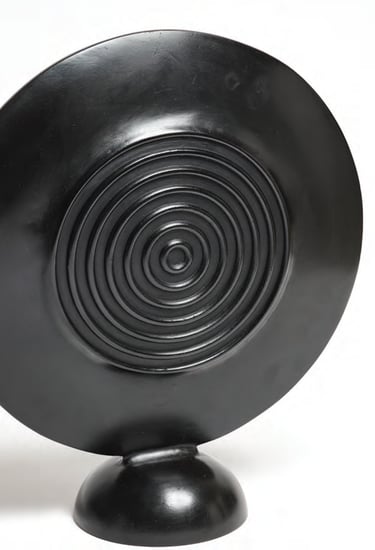


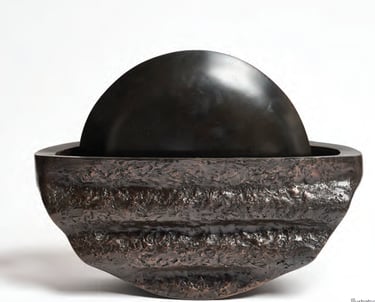
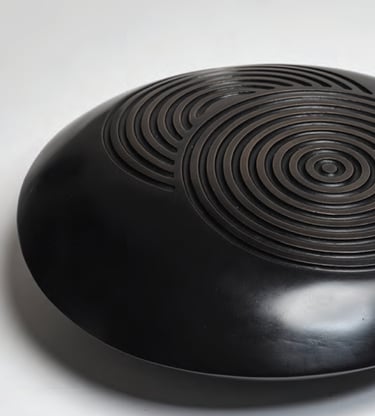

Rebekah Farr
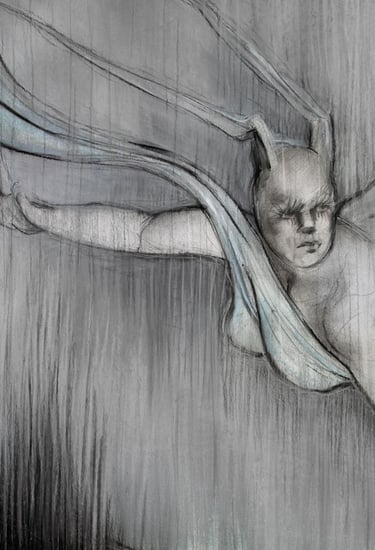

“I come from a family of storytellers, so storytelling has become an integral part of my art.” Her multidisciplinary practice spans painting, drawing, monotype printmaking, and animation, each medium offering a way to explore narrative and human presence.
Her creative journey began with life drawing classes and evolved through a Foundation Studies course, a Fashion degree, and postgraduate study in Animation and Interactive Media in Melbourne. “That final stage of study was key in developing my sense of narrative and movement.”
Returning to Aotearoa in 2005, she was inspired by the landscapes of the Wairarapa, eventually shifting her focus to figurative work. “I started with landscapes, but I found myself wondering, where are the people? As soon as there were people, there was story.”
Her painting practice includes techniques using oil and cold wax medium, which she initially made herself before the material was available in New Zealand. Her methods were featured in the award-winning book Cold Wax Medium (2016). Now based in Tāmaki Makaurau, she has returned to animation - “something I can do anywhere”, while continuing to explore new ways of storytelling through mixed media.
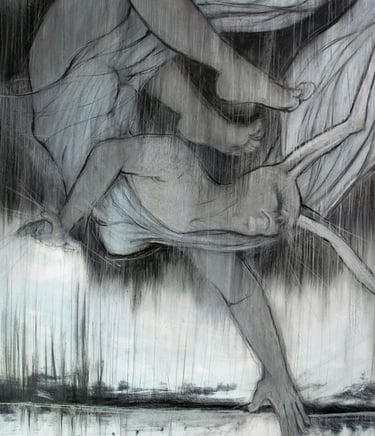

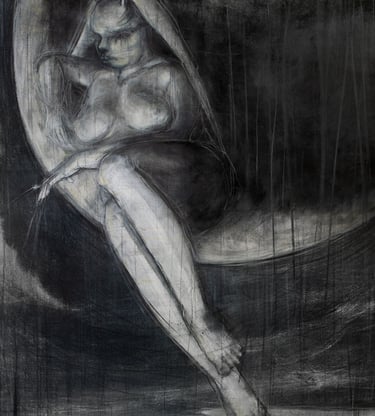

Wanda Gillespie
Wanda Gillespie is a contemporary artist specializing in sculpture, installation, and public art. Known for her interactive abacus sculptures and wood-carved figurative works, her practice explores history, time, truth, and mysticism, drawing from ancient artifacts and nature’s mathematical harmony.
Gillespie has exhibited widely, including at the Institute of Modern Art, Contemporary Art Tasmania, and NGV Design Week. She has been a finalist in major sculpture prizes such as the Woollahra Small Sculpture Prize, National Contemporary Art Award, and the Blake Prize, winning the Art & Australia/Credit Suisse Award in 2014.
Her work has been supported by the Australia Council, Creative New Zealand, and City of Melbourne. She has undertaken residencies in Indonesia (Asialink, Arts Victoria) and at Cité Internationale des Arts, Paris. Recent solo exhibitions include Crossing the Rubicon (Sanderson Contemporary) and The Ministry for Mystical Reckoning (Stockroom Gallery).
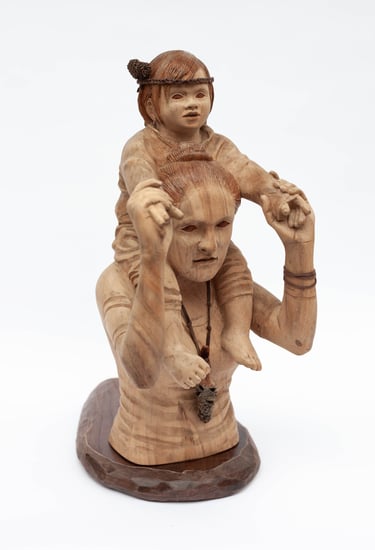

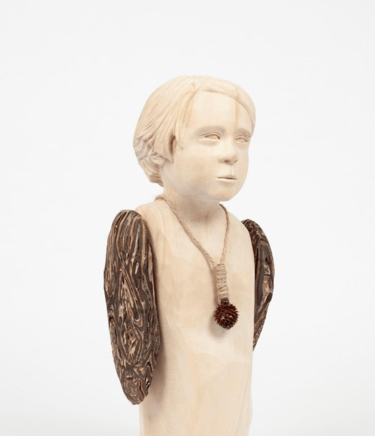

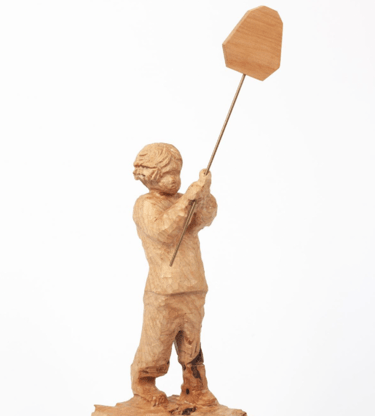

Bravery of Women
Bravery rarely arrives with a flourish. Without seeking spectacle or conquest, it arrives quietly—like the steady hand that mends what’s been torn, while salvaging fragments into something whole. In The Bravery of Women, courage moves like a tide beneath the visible—like warmth passed hand to hand, made sacred through touch. These works do not shout. They hum. They ask for attention and the kind of listening that begins in the body, not the ears. Here, urgency yields to persistence and devotion: the kind that gathers, that remembers, that stitches with care. The five artists—Linde Ivimey, Dagmar Dyck, Marte Szirmay, Wanda Gillespie, and Rebekah Farr—turn toward one another like constellations in a shared sky. What they create is a harmony—woven from many threads, many hands, many truths.
Linde Ivimey’s sculpture is the first to greet you—though it does so with a whisper. SENSO É COLPA E VERGOGNA, composed of bone, cloth, wire, and time, is a reliquary and a reckoning. A woman stands, planted as if rooted in unseen soil, her arms cradling identical children turned toward each other in silent exchange. A crown of wishbones rises from her head like a fragile architecture of hope. This is a portrait of endurance. What was once worn, eaten, shed—discarded remnants of life—have been refashioned into something defiantly whole. This figure does not collapse under sorrow’s weight; she carries it upright, like someone who has learned to live beside their ghosts. Ivimey’s hands sculp and they suture. Bone to bone, silence to voice, memory to flesh. In her studio—part sanctuary, part infirmary—tenderness is forged in steel. And from this quiet force, the room begins to open, as if her work gives everything else permission: to speak, to be seen, to remember.
Dagmar Dyck’s paintings shape the space like breath—necessary and sustaining. Though a painter, her work begins before the brush, in the folds of fala (mats), in the quiet authority of ancestral hands. These paintings are talanoa—dialogues of memory, material, and matrilineal knowledge. Her practice returns us to Tongan cosmologies, rethreading ancestral memory through aesthetic form. History here is not confined to books or institutions—it lives in what women have always made: the mats beneath us, the patterns learned by touch. To encounter these works is to understand: the mat does not lie passive. It speaks. It listens. It remembers.
The room turns, and we enter the gravitational pull of Marte Szirmay’s bronzes—circular forms that hover like cosmograms. They orbit like meditations—echoes of tides, of the moon, of the body’s own rhythms. Where Dyck holds history and Ivimey holds flesh, Szirmay gives us time itself, folded into form. The circle here is not closed—it’s a continuum: the ouroboros, the seasons, the return. Cast in bronze, yet breathing with softness, her sculptures steady the space. They remind us that bravery can be quiet.
That to revolve is to remain. That there is strength in staying soft, staying cyclical, staying lit.
Wanda Gillespie’s carved figures arrive like visitors—guardians of thresholds. Made from wood, they stand open-eyed, open-hearted, holding a stillness that hums with presence. The figures seem to carry something just beyond language—a whisper, a fragment of song, a memory half-remembered. The grain of the tree holds time while the carved surface holds touch. Through the work, matter becomes spirit and sculpture becomes invocation. Gillespie’s figures remind us: spirit is not elsewhere. It’s here. Embedded in gesture, in grain, in return.
Rebekah Farr’s drawings settle with a softness that lingers. Graphite becomes grief through longing and presence. Each mark shows up as intention, hovering at the edge of knowing, asking us to stay open, stay uncertain and soft. On the page, the trace of memory becomes outline while the absence becomes sacred.
Each artist in this show brings forth something brave—the kind of bravery that leans in and listens. They remain with what aches and what mends, what shatters and what stitches. They do not flinch from raw material—bone, scar, pigment, spirit—but transform it into offering. This is not a chronology. It is a weaving. Each binds to the next until what emerges is a shared body of knowing.
Louise Bourgeois once said that art is a guarantee of sanity. These women remind us that it is also a guarantee of memory through kinship.
The Bravery of Women is an incantation. It is what happens when the body becomes the text, when survival becomes a form of beauty. These works hold. They hold each other. They hold us.
Not loud. Not fleeting. But enduring. Unyielding. Infinite.
By Dina Djezić

